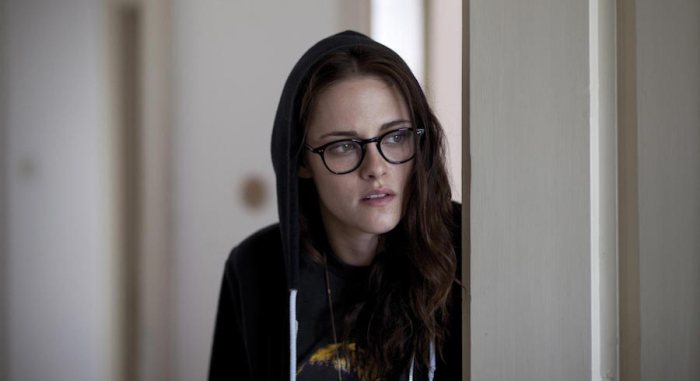The hero of “Jeanne Dielman, 23 Quai du Commerce, 1080 Bruxelles” spends most of the film’s 3 ½ hours alone in rooms. She cuts potatoes. She cleans her tub. She sets the dinner table. Occasionally she has a guest, including the men who pay her for sex. But talk is brief, if it happens at all, even if it’s her beloved but remote teenage son. Gamely played by Delphine Seyrig, Jeanne has only one real companion: the film’s director, Chantal Akerman. There’s a modest crew, but watching “Jeanne Dielman” patiently unfold, in one unmoving, epic long take after another, you feel it’s just the two of them, working silently together to make one of the great and righteously angriest works of cinema-as-art. RELATED:Geek Girl in Hollywood: A plea for sanity over “Batman v Superman” Akerman was only 25 when she made “Dielman,” in 1975. Last October, the Belgian filmmaker took her life, at 65. Her death casts a pall over BAM’s “Chantal Akerman: Images Between the Images,” a month-long series containing a large chunk of her CV. But these films would be bottomlessly sad even were she still with us. Her films often spend huge tracts of time staring dead-eyed at people isolated in frames, usually not speaking, almost never articulating their pain or whatever’s going on in their heads. Hers is a cinema of loneliness, whether they’re abstract narratives like “Dielman” or even docs about immigrants, injustices in America’s south or her own life, which remains private even when that’s all she’s filming. RELATED:Review: “Everybody Wants Some!!” is Richard Linklater’s latest bittersweet romp “Dielman,” still her best-known work, is not included in BAM’s Akerman series, but only because it’s being shown elsewhere at the same time. Akerman’s death was so shocking that it’s mobilized the New York repertory scene to team up, with Film Forum screening “Dielman” for a week’s run and Anthology Film Archives and Museum of the Moving Image offering their own screenings. You can see any number of uncompromising hypnotic works of super-minimalism, like “Je Tu Il Elle,” “News from Home” and “Toute une Nuit” — all melancholic yet playful works where you both forget about time and note every passing moment. Even the long stretches where nothing is happening make the willing viewer pay even more attention. Both times I’ve seen “Dielman,” the audience gasped in unison when our usually unflappable and precise protagonist clumsily dropped a spoon. There’s more to Akerman than her abstract, slow cinema: She made fiction and non-fiction, long movies and shorts. She made a musical (“Golden Eighties”), a Proust adaptation (“La Captive”) and two deceptively fizzy comedies (“A Couch in New York,” “Tomorrow We Move”). Akerman refused to be piegeonholed by labels; a gay Jewish woman, she wouldn’t let her films be shown in gay, Jewish or women’s film festivals. Even calling her an experimental filmmaker seems limiting, given how she kept one foot in the mainstream. She was, essentially, just a filmmaker. RELATED: Interview: Kirsten Dunst on “Midnight Special” and preferring TV to indies But common in all her films was a depiction of isolation and a reluctance to give too much to the viewer. In “Je Tu Il Elle,” from 1974, she filmed herself as she lounged about an apartment alone, often wearing nothing. The film’s last section finds her rolling about in bed with her character’s ex (Claire Wauthion, Akerman’s girlfriend at the time). This isn’t the posed lesbian sex of “Blue is the Warmest Color”; it’s animalistic and messy, with no regard for who’s watching, even if the scene is brightly lit and runs some 15 minutes. This scene points to something else about Akerman: She’ll bare her body but keep her real self under lock and key. She would tease out her own feelings; many of her films — including “Dielman” and “Meetings with Anna” — are inspired in part by her relationship with her mom, Natalia, who died in 2014. “No Home Movie” is all about her mother, filmed mostly in her apartment. But the film doesn’t allow us to get too close to either Akerman, keeping us at arm’s length. We may be spying on private moments, including chatty lunch conversations or Natalia sitting for minutes on end, reading in a chair. But we’re still one step away from mere voyeurs, forced to settle for projecting a sense of isolation on people we’ll never really know. RELATED: Chantal Akerman, legendary Belgian filmmaker, dies at 65 That sadness extends to Akerman’s documentaries, even those about other people. She journeyed to the American south for 1999’s “Sud (South)” — which investigates, sort of, into the 1998 murder of James Byrd Jr. by white racists — and 2002’s “From the Other Side,” about illegal immigrants who’ve crossed over from Mexico. Here Akerman is partly playing journalist, but even the interviews are done with the same general minimalism she brought to her most famous work. Shot on cheap video, these scenes tend to run on for several unblinking minutes, observing the way people behave as much as what they’re saying. Both films pepper interviews with long stretches of nothingness: driving, landscape observations, wind blowing. They’re not outliers but continuations of a rich and unique career, one spent people watching those whose only companion is often Akerman’s camera, finding kindred spirits in a world that tends to forget about most of us. “Chantal Akerman: Images Between the Images” runs fromApr. 1 through May 1 atBAM Rose Cinemas,30 Lafayette Ave., Brooklyn. Visit the site for the schedule and tickets.
A new Chantal Akerman retro shows her cinema of loneliness

Janus Films

















